Ancient Psychedelia: Alien Gods & Mushroom Goddesses
Online Book - Chapter 18, Page 348
Back to Online Book Mainpage / Next Page (Chapter 18, Page 349)
Also, we can further add to this list the “Scene with Venus” in the Lombard Manuscript by De Sphaera, (On the Sphere) dated 1450 AD (70a). Sometime after 1387, the zodiac was depicted by John Somer, in the “Astronomical Calendar” and the man in the center is outlined by a mushroom shape (70b). The Pentecost is the theme of another image with a giant mushroom depicted (70f). From Master of Girart de Roussillon and his Le Songe de Pestilence, c. 1455, there is an image of two men looking upwards, one of whom looks to be the devil, both of whom have tippets, or ceremonial scarfs which are accentuated by their contrasting colors. The devil character wears a red one with gold lines around the circumference of the ridge, and his friend has a greenish one, with a bold red stem-bolt, which his two hands are grasping (70i). These images were never meant to be shared in this way I’m sharing them with you here. Only the privileged few have been initiated into this knowledge in this way, and when they were, these images were not all available for them to see in one place. 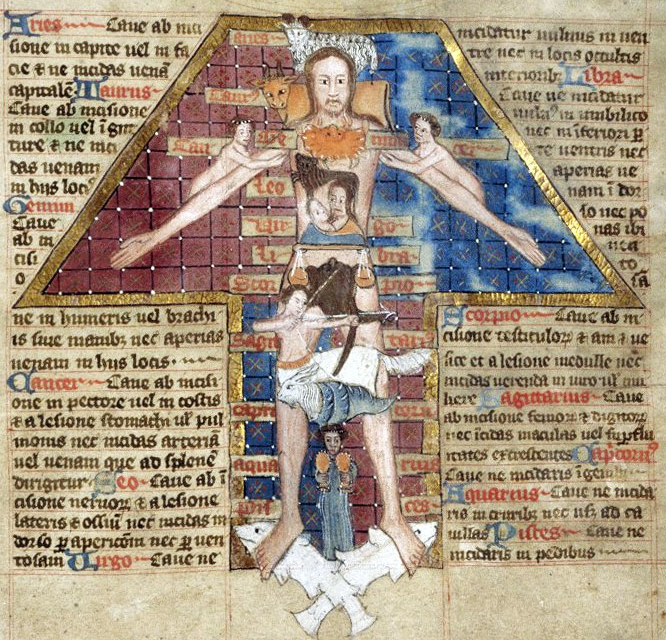 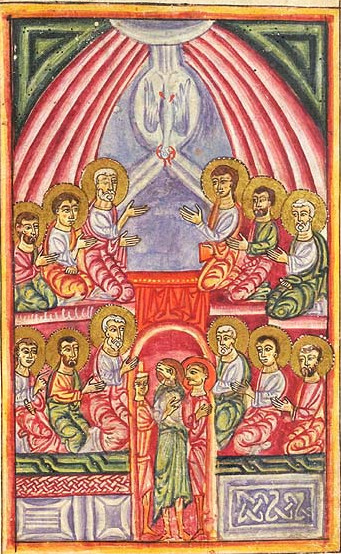 R: (70f) Pentacost L: (70a) Scene With Venus Lombard Manuscript De Sphaera c. 1450 AD 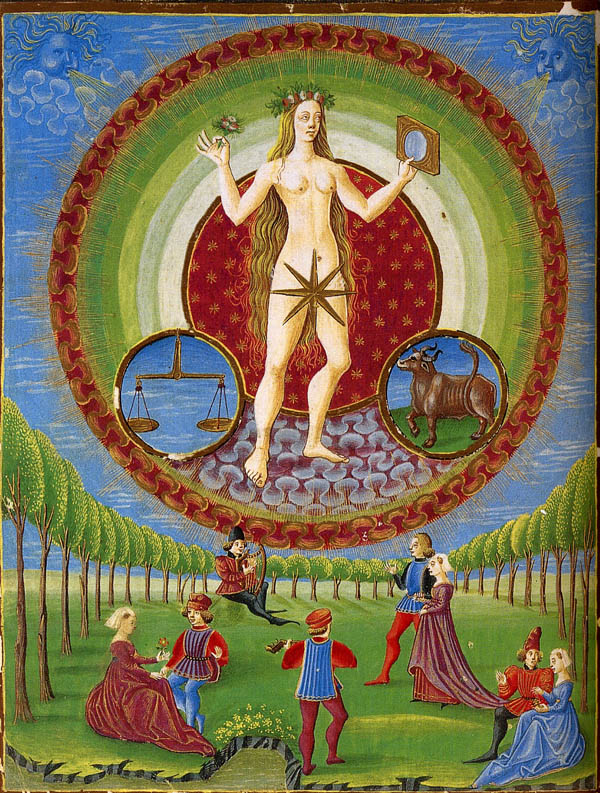 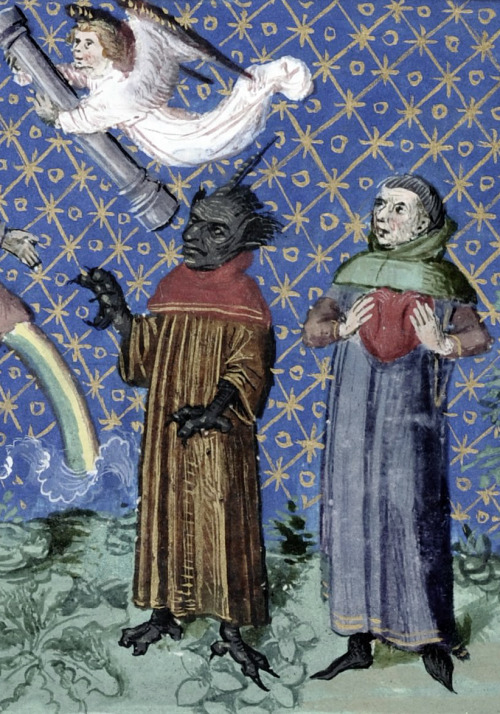 R: (70i) Master of Girart de Roussillon Le Songe de pestilence c. 1455 |
Beheaded or Bemushroomed? A most interesting image is this very early one from central France from 1170-1180 AD. The theme is Judith and Holofernes, and the image reveals a very cleverly disguised mushroom when viewing the central aqua colored pole and extended white hood top. A severed head is being passed between the two of them (70g). Judith is also beheading Holofernes in a Catalonia Bible, c. 1320, which has a red curtain for the mushroom cap and a white pole symbolizing the stem (70h). One of the constant themes we come across in Christian medieval art is the act of beheading people. The interesting thing about these depictions though is that the people are often smiling, and the scenes are more often humorous than actually gruesome or frightening. In the case of Judith beheading Holofernes, we just saw one image which disguised the mushroom. The beheading of John the Baptist is another example of this same style of beheading in medieval art. In St. Mark’s Basilica, from 1343-1354 AD, an art piece depicts Salome dancing with head of John the Baptist on a platter above her head. Salome is dressed in red with white dots on her gown (67g). From the year 1511, we have a depiction of the head of John the Baptist, which has a mushroom styled design to it as well (76f). It becomes suspicious when we see over and over, beheadings which have mushroom images hidden in them. 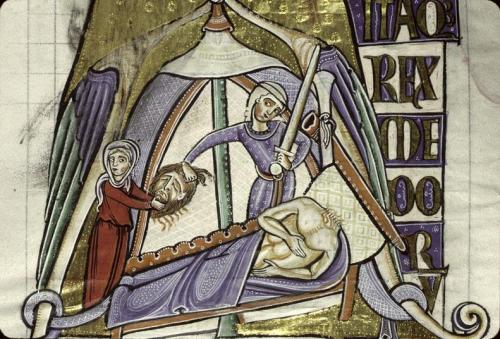 (70g) Judith and Holofernes. Central France c. 1170-1180 AD 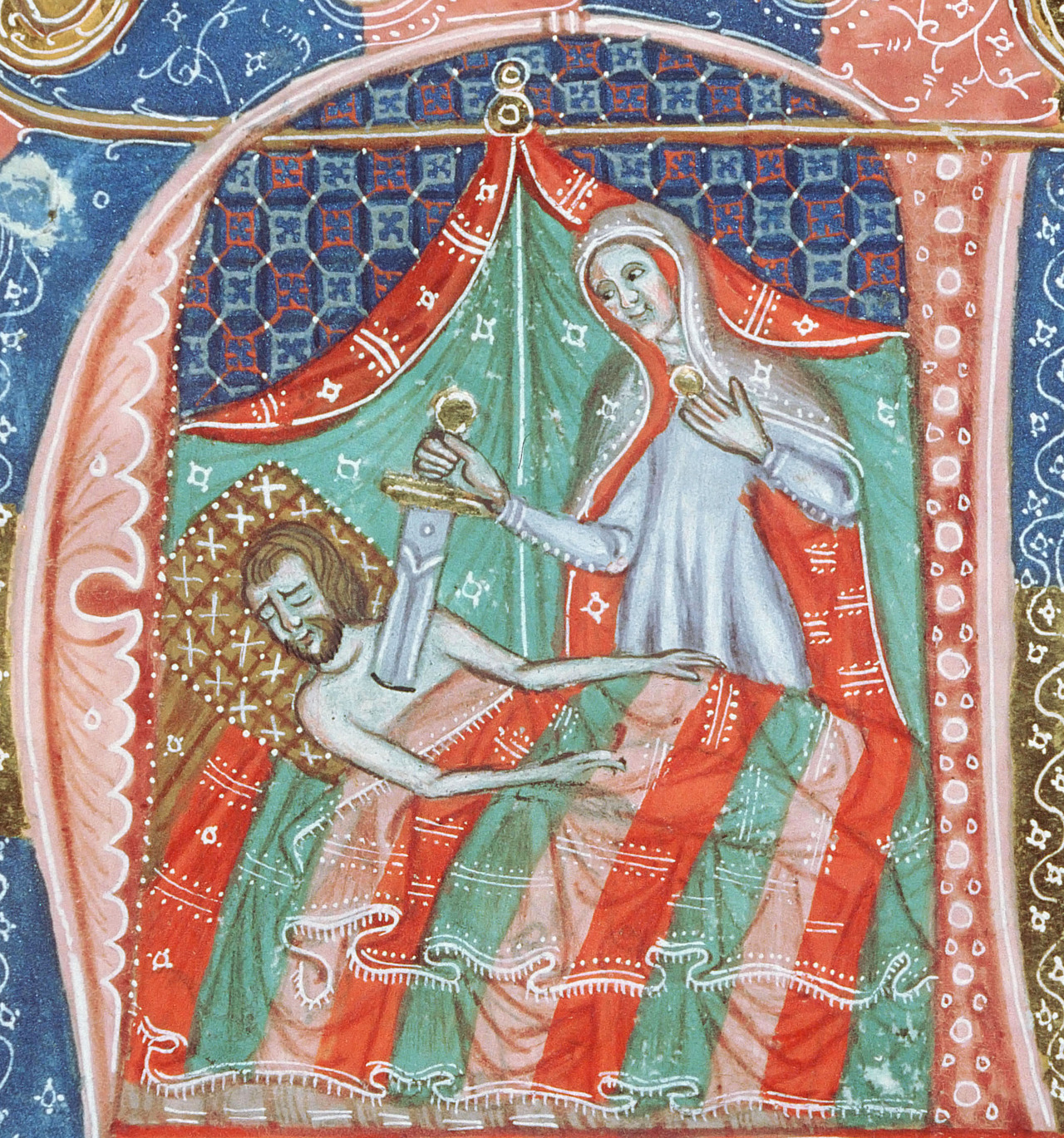 (70h) Judith and Holofernes - Bible, Catalonia - (Tours, Bibliothèque municipale, ms. 8, fol. 258r) c. 1320 |
Go Back to Page 347